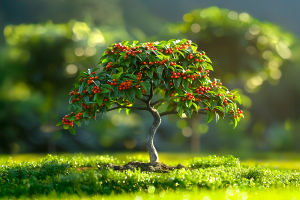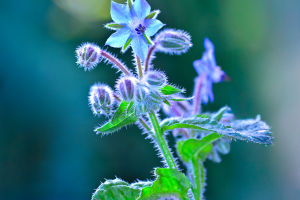Have you ever imagined a plant that can live for thousands of years, yet looks unlike any other? The Welwitschia mirabilis, often called the "millennium plant," is a true botanical marvel.
It thrives in some of the most extreme desert environments on Earth, quietly surviving for centuries with only two leaves that grow continuously throughout its life.
What makes this ancient plant so unique? How does it endure in harsh, arid conditions where most life struggles to survive? Let's explore the remarkable biology and resilience of this living relic.
Two Leaves That Defy Time
Unlike typical plants that grow multiple leaves, branches, and stems, Welwitschia mirabilis has only two leaves—two massive, strap-shaped leaves that grow wider and longer over time. These leaves often become twisted, split, and worn out by desert winds, giving the plant a wild, "crazy" look.
This continuous leaf growth means the plant adapts its shape through the years, maintaining photosynthesis even when parts of the leaves become damaged. This remarkable strategy helps it survive where water and nutrients are scarce.
Surviving in One of the Harshest Habitats
Welwitschia's native habitat is the Namib Desert, one of the driest places on Earth. Here, rainfall can be almost nonexistent for years. Instead of relying heavily on rain, Welwitschia gathers moisture from coastal fog and dew. Its deep root system anchors it firmly in the rocky soil and taps into underground water sources.
Scientists have discovered that the plant's thick, waxy leaves reduce water loss, while specialized stomata regulate gas exchange efficiently—critical adaptations for desert survival.
A Plant That Ages Like Fine Cognac
What fascinates botanists most is Welwitschia's lifespan. Some individuals are estimated to be over a thousand years old, making them some of the longest-living plants on Earth. This longevity has earned it the nickname "millennium plant."
The plant's slow growth, combined with its ability to repair leaf damage and withstand extreme heat, allows it to persist through centuries of environmental change. For many, it is a living window into Earth's distant past.
Lessons From the Millennium Plant
Welwitschia mirabilis offers important insights into resilience and adaptation. In an era where climate change and desertification threaten many ecosystems, this plant exemplifies how life can innovate to persist in tough conditions.
Botanist Dr. Jennifer A. Farrant notes that understanding how Welwitschia manages water use and stress tolerance could inspire new agricultural techniques or drought-resistant crops in the future.
Encountering Welwitschia in Nature
If you want to see this ancient survivor, the best place to visit is the Namib-Naukluft National Park in Namibia. The park protects many Welwitschia plants in their natural habitat, where visitors can witness their peculiar forms firsthand.
Some travel tips:
1. Best time to visit: Cooler months (May to September) offer more comfortable trekking conditions.
2. Entry fees: Park entrance typically costs around $10–$15 USD per person.
3. Accessibility: Guided tours are recommended due to the remote desert location.
4. Respect nature: Avoid touching the plants to preserve their health and longevity.
More Than Just a Strange Plant
Welwitschia mirabilis is more than a curiosity—it's a symbol of survival against the odds. Its extraordinary two leaves, ancient age, and endurance challenge our ideas of what plants can be and how life adapts.
Next time you think about plants, remember the millennium plant: a silent giant living thousands of years, quietly thriving in one of the harshest places on Earth. What can its story teach us about resilience in our own lives?
Would you be inspired to witness such a living fossil? Nature's ancient marvels await those willing to explore beyond the ordinary.


